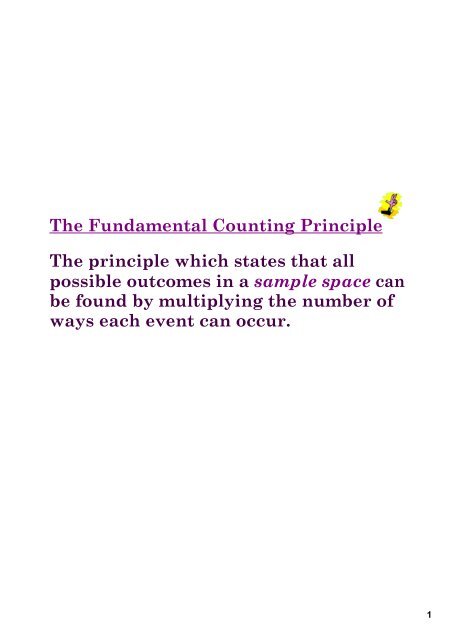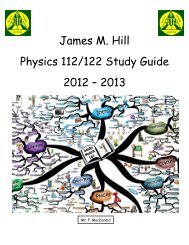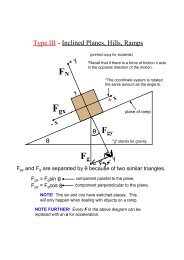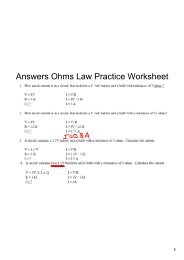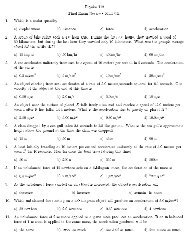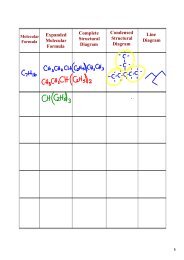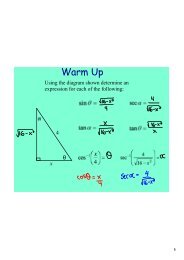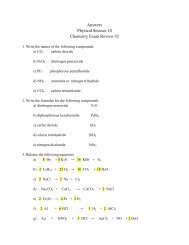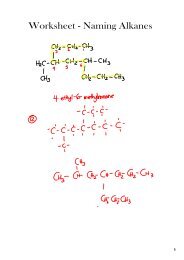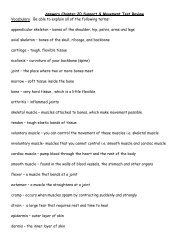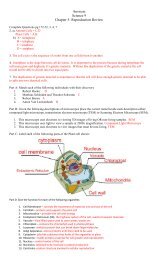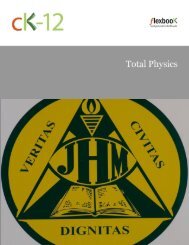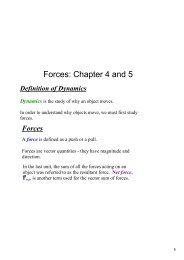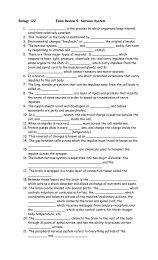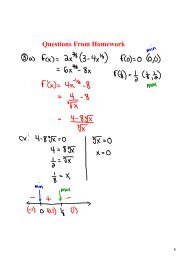Fundamental Counting Principle and Factorial Notation
Fundamental Counting Principle and Factorial Notation
Fundamental Counting Principle and Factorial Notation
Create successful ePaper yourself
Turn your PDF publications into a flip-book with our unique Google optimized e-Paper software.
The <strong>Fundamental</strong> <strong>Counting</strong> <strong>Principle</strong><br />
The principle which states that all<br />
possible outcomes in a sample space can<br />
be found by multiplying the number of<br />
ways each event can occur.<br />
1
Example 1: A deli has a lunch special which consists of a s<strong>and</strong>wich,<br />
soup, dessert <strong>and</strong> drink for $4.99.<br />
They offer the following choices:<br />
S<strong>and</strong>wich: chicken salad, ham, <strong>and</strong> tuna, <strong>and</strong> roast beef<br />
Soup: tomato, chicken noodle, vegetable<br />
Dessert: cookie <strong>and</strong> pie<br />
Drink: tea, coffee, coke, diet coke <strong>and</strong> sprite<br />
How many lunch specials are there<br />
2
Let’s use the basic counting principle:<br />
There are 4 stages or events: choosing a s<strong>and</strong>wich, choosing a soup,<br />
choosing a dessert <strong>and</strong> choosing a drink.<br />
There are 4 choices for the s<strong>and</strong>wich, 3 choices for the soup, 2<br />
choices for the dessert <strong>and</strong> 5 choices for the drink.<br />
Putting that all together we get:<br />
S<strong>and</strong>. Soup Dessert Drink # of lunch specials<br />
4 x 3 x 2 x 5 = 120<br />
So there are 120 lunch specials possible<br />
3
Example 2: You are taking a test that has five True/False questions.<br />
If you answer each question with True or False <strong>and</strong> leave none of them<br />
blank, in how many ways can you answer the whole test<br />
Let’s use the basic counting principle:<br />
There are 5 events: question 1, question 2, question 3, question 4, <strong>and</strong> question 5.<br />
There are 2 choices for each question.<br />
Putting that all together we get:<br />
quest. 1 quest. 2 quest. 3 quest. 4 quest. 5 # of ways to answer test<br />
2 x 2 x 2 x 2 x 2 = 32<br />
So there are 32 different ways to answer the whole test<br />
4
Example 3: A company places a 6symbol code on each unit of product.<br />
The code consists of 4 digits, the first of which is the number 5, followed<br />
by 2 letters, the first of which is NOT a vowel.<br />
How many different codes are possible<br />
Let’s use the basic counting principle:<br />
There are 6 stages or events: digit 1, digit 2, digit 3, digit 4, letter 1, <strong>and</strong> letter 2.<br />
In general there are 10 digits: 0, 1, 2, 3, 4, 5, 6, 7, 8, <strong>and</strong> 9. The first digit is limited to<br />
being the number 5, so there is only one possibility for that one. There are no<br />
restriction on digits 2 4, so each one of those has 10 possibilities.<br />
In general, there are 26 letters in the alphabet. The first letter, cannot be a vowel (a, e,<br />
i, o, u), so that means there are 21 possible letters that could go there. The second<br />
letter has no restriction, so there are 26 possibilities for that one.<br />
Putting that all together we get:<br />
digit 1 digit 2 digit 3 digit 4 letter 1 letter 2 # of codes<br />
1 x 10 x 10 x 10 x 21 x 26 = 546000<br />
So there are 546000 different 6symbol codes possible<br />
5
<strong>Factorial</strong> <strong>Notation</strong><br />
The product of consecutive natural numbers,<br />
in decreasing order to the number 1, can be<br />
represented using factorial notation.<br />
The symbol for factorial is the<br />
exclamation mark, !.<br />
6
Example 1<br />
Calculate the following:<br />
a) 5!<br />
b) 3!<br />
c) 10!<br />
Solution<br />
a) 5! is read as "five factorial" b) 3! is read as "three<br />
factorial"<br />
5! = 5 x 4 x 3 x 2 x 1 3! = 3 x 2 x 1<br />
= 120 = 6<br />
c) 10! is read as "ten factorial"<br />
10! = 10 x 9 x 8 x 7 x 6 x 5 x 4 x 3 x 2 x 1<br />
= 3 628 800<br />
Fortunately, all scientific calculators have a factoral<br />
key so we don't have to manually do the calculations.<br />
7
Example 2<br />
Simplify the following:<br />
a) 14! = 14 x 13 x 12 x 11 x 10 x 9 x 8 x 7 x 6 x 5 x 4 x 3 x 2 x 1<br />
8! 8 x 7 x 6 x 5 x 4 x 3 x 2 x 1<br />
NOTE: The factors 8, 7, 6, ... , 1 in the denominator<br />
of the fraction can cancel with the like factors<br />
in the numerator of the fraction. So all we<br />
are left with is:<br />
14 x 13 x 12 x 11 x 10 x 9 = 2 162 160<br />
b) 9! = 9 x 8 x 7 x 6 x 5<br />
4!<br />
= 15 120<br />
8
Example 3<br />
Write 12 x 11 x 10 x 9 as a ratio/quotient of<br />
factorials.<br />
Solution<br />
The expression contains the first four terms of 12!<br />
We can write an expression that would divide the<br />
remaining terms.<br />
12 x 11 x 10 x 9 x 8 x 7 x 6 x 5 x 4 x 3 x 2 x 1<br />
8 x 7 x 6 x 5 x 4 x 3 x 2 x 1<br />
= 12!<br />
8!<br />
9
Example 4<br />
Write 10 x 9 x 8 x 3 x 2 x 1 as a ratio of factorials.<br />
Solution<br />
= 10 x 9 x 8 x 7 x 6 x 5 x 4 x 3 x 2 x 1 x 3 x 2 x 1<br />
7 x 6 x 5 x 4 x 3 x 2 x 1<br />
= 10! x 3! or 10! 3!<br />
7! 7!<br />
10
NOTE: By definition 0! = 1<br />
11


